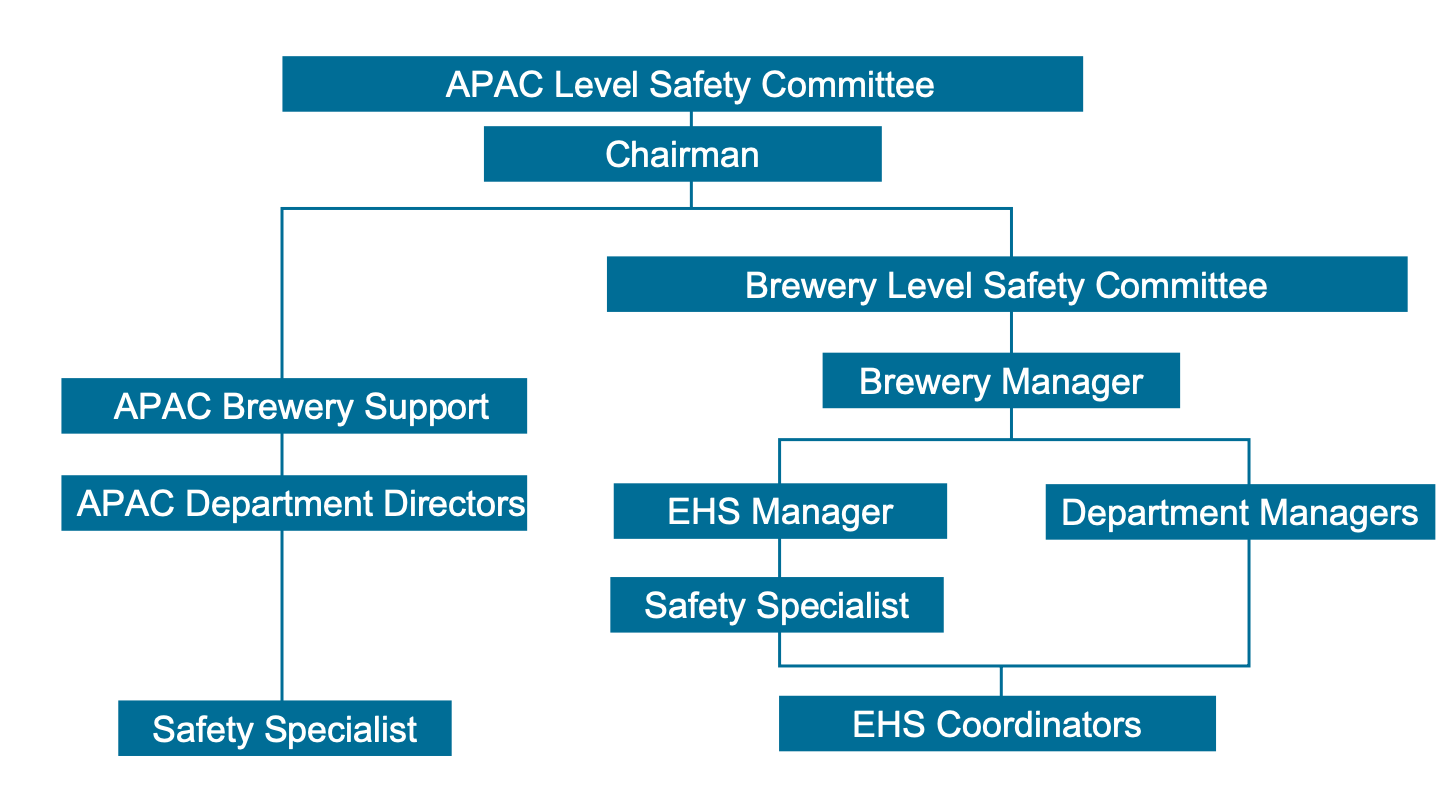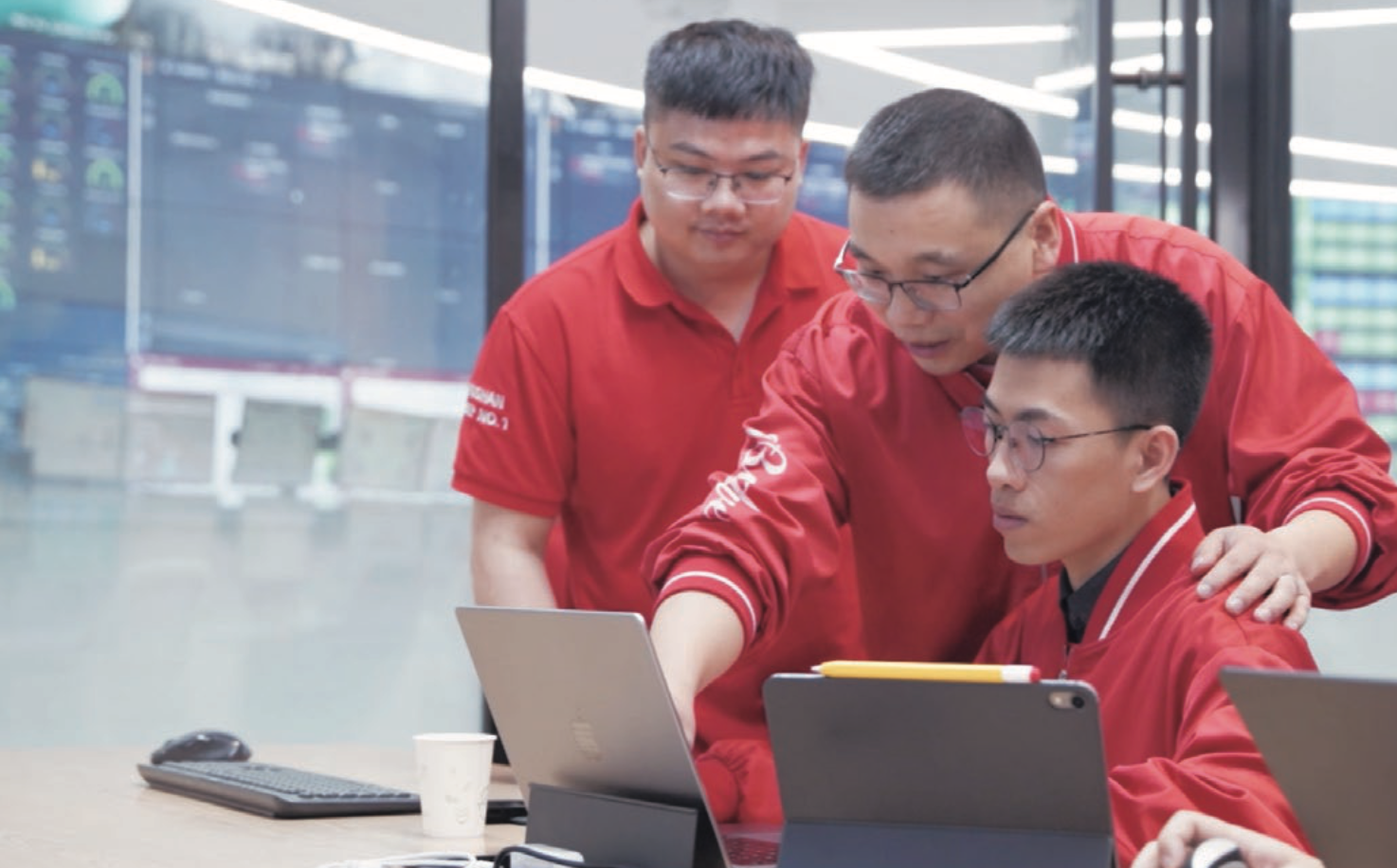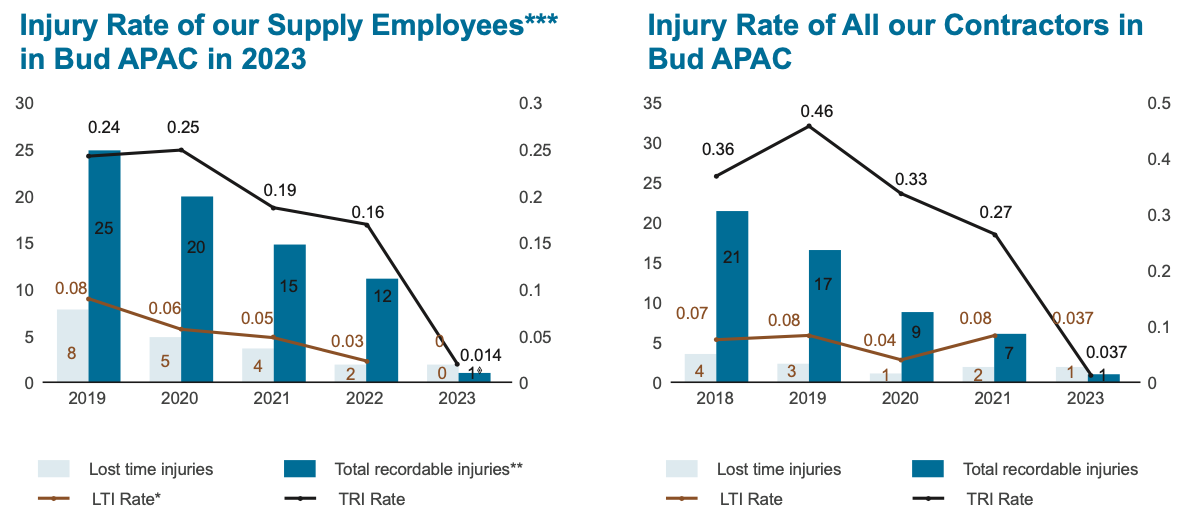| UN SDGs | Our Goal | KPI Measurements | 2017 Baseline | Progress in 2022 | Progress in 2023 | 2025 Target |
|
Goal 3: Good Health and Well- being
|
To reduce total Lost time Injuries for Bud APAC’s employees and contractors | % reduction of total Lost Time Injuries (LTI) for our employees and contractors | 0% | 80% | 95% | > 60% |
| (Definition of LTI: cases involving days away from work and/or days of restricted work activity beyond the date of injury or onset of illness) | (Total LTI = 20) | (Total LTI = 4) | (Total LTI=1) |



| Roles | Responsibilities |
| APAC Level Health and Safety Committee |
• Supervise both internal and external health and safety strategies and initiatives • Execute measures to attain health and safety targets • Stay updated on any changes in legal requirements pertaining to health and safety • Review industry best practices and devise plans for continuous improvement |
| Brewery Level Health and Safety Committee |
• Provide guidance to brewery staff to promote a safety culture • Review on-site safety incidents and potential hazards • Help identify and eliminate unsafe actions or conditions • Ensure compliance with local safety regulations |


We adhere to the health and safety pillar of the Voyager Plant Optimization (VPO) system as part of our routine management. This comprehensive system not only meets but surpasses the requirements outlined in OHSAS 18001/ISO 45001. To ensure its effectiveness, the VPO system undergoes internal audits twice a year. As of 2023, all of our breweries are covered by the VPO system, with 74% of them certified by third-party or local work safety standardization. Additionally, 6 of our breweries have obtained certification for the ISO 45001 standard. We also have operational procedures and safety standards in place for our production processes and contractors.
The total Lost Time Injuries recorded for all employees (Supply and Second-tier logistics/Sales Employees****) in Bud APAC is 71 and our LTI rate for all employees is 0.1 in 2023.

* Lost Time Injuries (LTIs) – Occupational injury
resulting in more than one-day absence from work.


